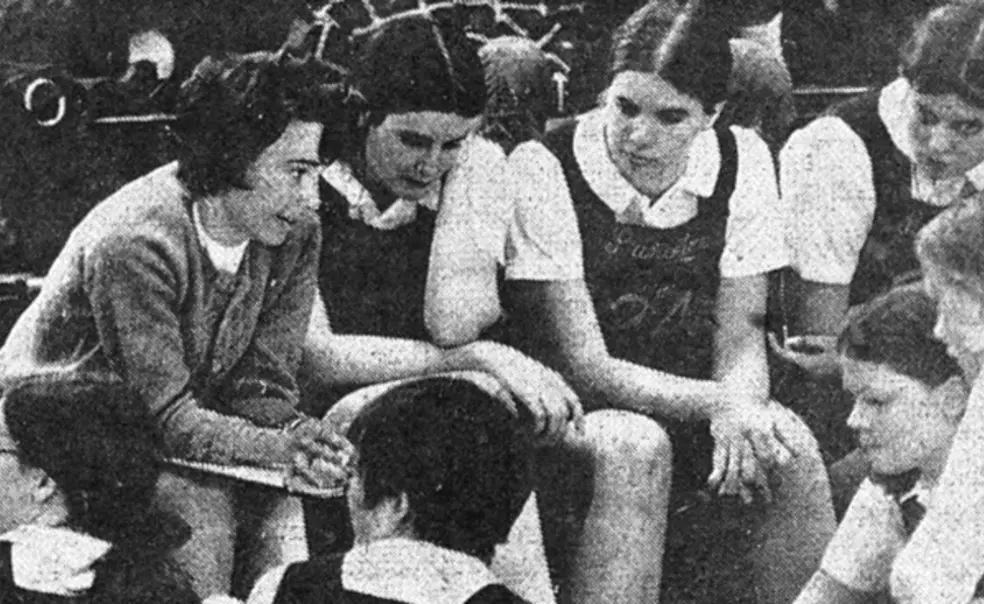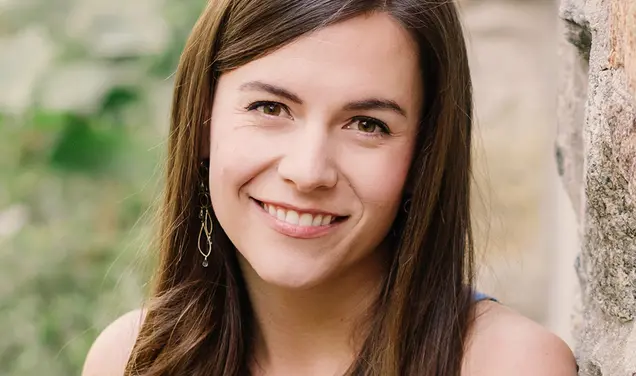Having captained an undefeated basketball team in high school, Victoria Bjorklund ’73 just assumed that when she wanted to shoot some baskets, she could simply go to the equipment room and ask for a ball. However, in the fall of 1970, when she showed up in Dillon Gym in shorts and high top sneakers, she was met with resistance.
“They’re not for you,” she was told.
The next year, Bjorklund would become the founding member of Princeton’s inaugural women’s basketball team, one of five sports added in the third year of coeducation.
Beginning with its first intercollegiate event in 1971 — a tennis match against Penn — Princeton women’s athletics would expand over four decades, evolving into the 18-team powerhouse program that it is today. On the road toward 206 Ivy League championships, the Tigers would overcome periods when they didn’t always have what they need,
“The women’s program got out of the chute very fast,” remembers Bjorklund. In 1972, Wendy Zaharko ’74 won the individual squash national championship. In 1975, the basketball team that was founded just four years earlier would win the inaugural Ivy League championship, and defend that crown for the next three years. In 1976, Emily Goodfellow ’76 would become the first and only 12-letterwinner in Princeton athletics history, male or female. Later that year, rower Carol Brown ’75 became the University’s first female Olympic medalist.
As the talent level increased, women began seeking out additional coaching to continue their development as elite athletes. Deborah Saint-Phard ’87, a physician and former Olympian thrower, recalls working with Fred Samara, head coach of men’s track and field and a 1976 Olympic decathlete, in her senior year.
“It was an exception of all exceptions,” says Saint-Phard, who was grateful for Samara’s guidance. “I was the first woman he’s ever coached. Under Fred, I kept getting better.” Saint-Phard would go on to compete in the 1987 World Championships and the 1988 Summer Olympics in Seoul, South Korea.
Tiger women have continued to make strides both on and off the playing field. Mollie Marcoux Samaan ’91, the University’s first female director of athletics, says, “The differences over time are pretty stark, not only in the resources available but also the level of athleticism and commitment from all of our female student athletes.”
By the late ’80s, Princeton had started to engage prospective female athletes in a formal recruiting process, attracting athletes of even higher caliber — and more of them.
“The reason I chose Princeton over Harvard or Yale was the sense that people on this campus valued athletics and valued women’s athletics,” says Marcoux Samaan, an eight-letter winner in ice hockey and soccer.
Greater commitment, access to resources, and increased attention to women’s sports also came with new challenges. “It’s great to have more energy around it but how do you then manage those stresses?” says Marcoux Samaan.

“That was new and it was sort of intimidating in that way,” she says. “I had a bad race and I remember reading one comment, ‘Oh, she’s like partying now.’ I was like, “No, I’m going to college at Princeton and I’m adjusting, and I still ran pretty well.”
Crista Samaras ’99, a three-time All-American lacrosse player, believes that “women are socialized to be perfect. There’s a lot more weight on the result and what that’s going to feel like.”
Marcoux Samaan points to current student athletes’ identity around being both a strong, competitive student and a strong, competitive athlete. “They’re equal on the two sides of the equation,” she says. “With more women identifying and really caring deeply about their athletic success, our job is to get them to not worry so much about the result but to worry about the holistic process.”
When Denna Laing ’14 was picking schools, it was Princeton’s focus on the holistic student that attracted her. “My dad told me that a lot of these other scholarships schools are going to treat me really well for four years, but that Princeton would set me up or the rest of my life,” she says. “That was a really big consideration for me, and he turned out to be accurate.
In the coming year, the athletic department is launching Tiger High Performance, an initiative that helps athletes optimize their performance by accounting for physiological behaviors and mindset.
There are other perks for today’s women athletes. Karlie Lund ’19, an ice hockey player, draws attention to some of the initiatives today that increase her team’s visibility and status. “The locker rooms were redone three years ago, and the school has definitely done lots of stuff for us,” she says. “This year was the first year that during our team photo, we got a green screen to take individual photos to make tweets and other promotion.”
Samaras, who spent 20 years coaching at the high school and collegiate level, says today’s women see parity on many different levels: “There’s gear, food, nutrition, practice time, gym time.” At the same time, she doesn’t look at the locker rooms now and want more for myself back then. “I feel hugely grateful,” she says.
Sophia Cai ’21 is a freelance writer with the University Press Club. Her work has appeared in the Trenton Times, the Asian Correspondent, and the Princeton Packet.











1 Response
Mary Hurley Begley ’75
7 Years AgoOpening the Doors to Women
Re “She Roars, She Scores” (posted online Nov. 1): I was cut from the squash team after the second day of tryouts. Although not a student-athlete, I still took advantage of Princeton’s sports facilities. One afternoon, I got bad blisters from playing squash. As I came out of the shower in the women’s locker room in Dillon Gym, I noticed a sign “to the training room.” I figured the trainers would have something for my foot, even if I wasn’t on a team.
Wrapped in my towel, I followed the arrow on the sign to a door signed “Do Not Open.” I paused, pondered, backtracked, and followed the training-sign arrows again. Once more, I came to the “Do Not Open” door. I opened the door ... and was deep into the men’s locker room facing a toweled student.
“Mary, what are you doing here?”
“Rich, get me out of here!”
Rich led me through the maze of the men’s locker room to its exit. To get back into the women’s locker room, I had to go through the gym lobby. The student at the desk was too stunned to ask the barefoot, towel-clothed student for her ID. Yet again, Old Nassau had opened her doors to the women. Three cheers!